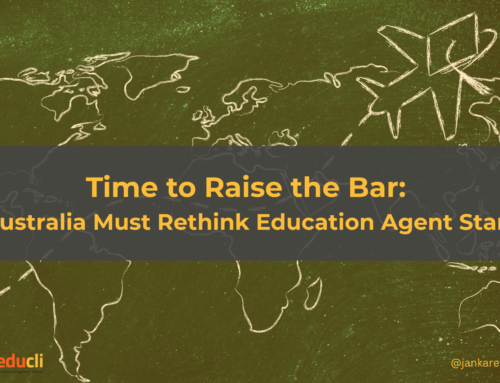In a recent article, the ABC explored the rise and fall of international student numbers — but what it didn’t quite spell out is that the international students are being scapegoated for a much deeper, structural problem in Australia’s migration policy. And while industry experts and insiders know this, the broader public discourse continues to fixate on students as the core issue. It’s misleading, and it’s wrong.
Let’s start with the numbers. While international student enrolments did surge post-COVID due to pent-up demand, those figures have already returned to near pre-pandemic levels. Meanwhile, the number of backpackers on working holiday visas — a group that contributes little in terms of long-term economic growth — has ballooned by over 50%. Yet, somehow, the spotlight remains squarely on international students.
Why? Because they’re easy targets. Unlike backpackers or temporary workers, international students are more visible, more measurable, and tied directly to educational institutions. But they’re also one of the few groups that actually do contribute meaningfully to the economy — paying fees, renting long-term, working in essential sectors, and often transitioning into skilled migration pathways that Australia desperately needs.
Migration experts Peter McDonald and Alan Gamlen from ANU warn that migration is already dropping faster than it rose, due in part to delayed visa expirations and extensions that are now consolidating. They predict a sharp drop in departures by 2027 unless the government intervenes sensibly. Instead of crafting a smart, long-term migration strategy, both major parties seem more interested in reactionary headlines.
Peter Dutton has pledged to slash student numbers and reduce permanent migration by 25%, with no detailed plan except for a vague reduction to the humanitarian program — a program that barely moves the needle. On the other side, Labor’s move to cap international student numbers through ministerial direction (after the Coalition blocked legislation) is another example of ad hoc policy that lacks long-term vision.
The result? Policy chaos. Enrolments are dropping. Institutions are in limbo and Australia’s reputation as a study destination — one of our biggest export markets — is at risk.
Here’s the truth: Australia doesn’t have a migration volume problem. It has a migration management problem. By targeting international students without addressing the broader issues — including the unmanaged spike in working holiday arrivals and the lack of a strategic pathway for skilled migration — the government is setting the stage for another avoidable disaster.
It’s time to stop blaming students and start demanding coherent, data-driven policy from our leaders. The international education sector deserves better — and so does Australia.
#InternationalStudents #InternationalEducation #EducationMatters #StudyInAustralia #GlobalEducation #MigrationPolicy #AustraliaMigration #FutureOfAustralia #EdTech #Educli





Leave A Comment